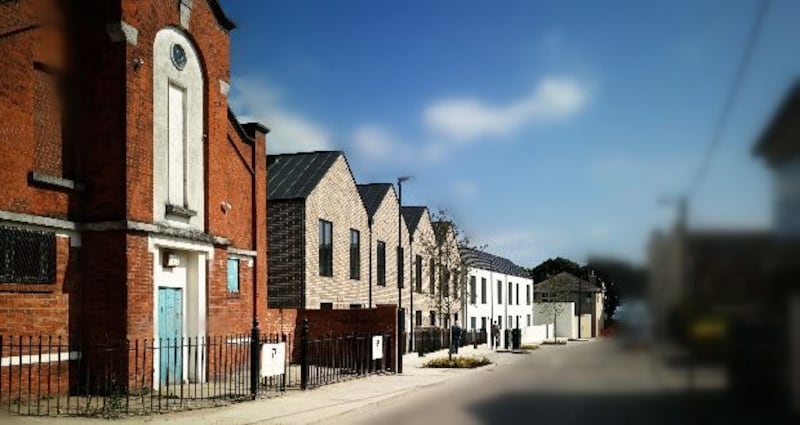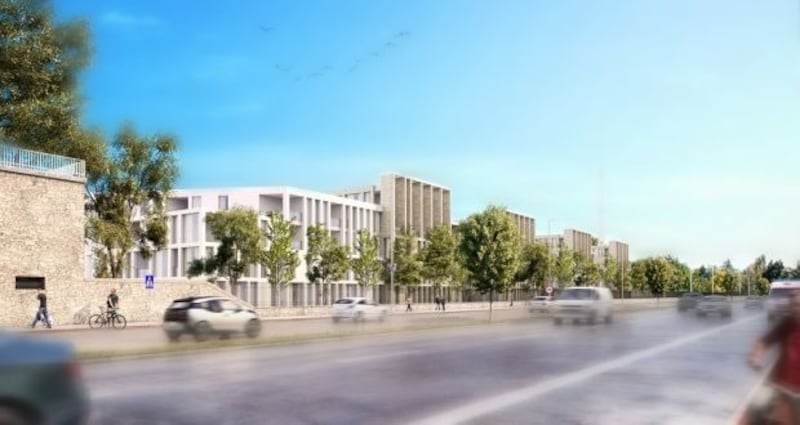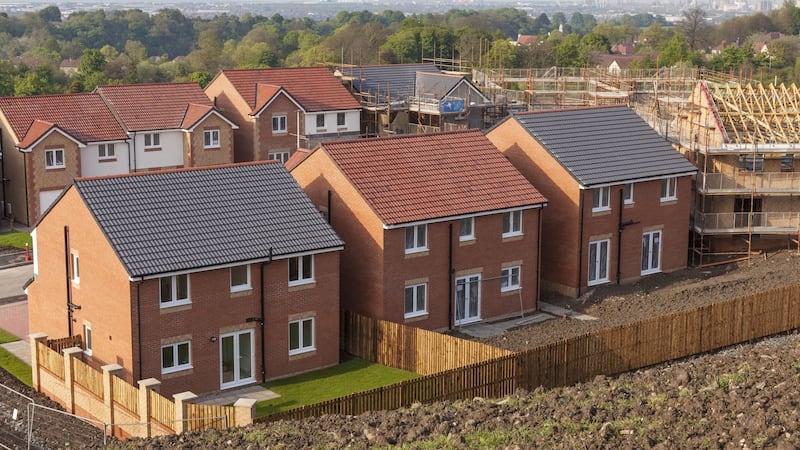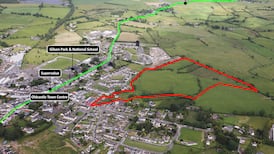You’ve scrimped and saved, researched the mortgage offers and done the maths on what you can afford, but when buying a new home there are many other factors to consider. Here are some smart questions to ask to help you make the decision that’s right for you.
1. Do your homework
Check the developer’s track record before you buy, is the advice of Colm Byrne, new homes director at SherryFitzGerald. “A lot of this information is online and the company’s website should list all its previous schemes as well as new development plans.”


If not, the selling agent should also be able to furnish you with this information. If buying off the plans, go and visit already-built schemes as some of the developers design similar styles of house for all their schemes as part of their overall signature. Glenveagh Properties, for example, is selling off-plan in Kilcock at the moment but a visit to its estates in Rush and Balbriggan will give you an idea of what to expect from the finished product.
First-time buyers should also ask if the development qualifies for the Government’s Help to Buy scheme, advises Raymond Palmer-Smith, new homes director at Knight Frank. “Properties registered with the scheme, which has been extended until 2021, can benefit substantially, getting up to 5 per cent towards the purchase of their new home.”
If buying a later phase of an existing development the internet forum Boards.ie can be a great resource to use, Byrne says. “Most schemes will be given an airing with naysayers and in-situ residents giving all the negatives and positives.”
2. What’s on the doorstep?
Check what amenities are within walking distance, says Ken MacDonald of Hooke & MacDonald. Questions to put to the selling agent include “how far away is the local shop for a pint of milk?”, “is there a neighbourhood bar or restaurant to go for a drink or a bite to eat at the weekend?”, “how long will it take the kids to walk to school from here?” to “what sort of open spaces are being factored into the development?”
Parks, public spaces, established schools, sports clubs and recreational facilities such as playing fields are essential to immersing yourself in the community. Some facilities may only be at the planning or construction phases, so can you live without such amenities for now?
Check too that there is a mix of home sizes and styles built within the development, McDonald says. “This will encourage buyers to feel they could put down roots there, that they might be able to trade up or down within the development.”

3.Connectivity
Good public transport links are crucial, especially to those buying in Dublin’s commuter counties and working in the city. Gina Kennedy, director of DNG new homes, suggests you invest in a large and up-to-date wall map of the whole of the Leinster region showing the most recent infrastructural additions and start by marking the locations of your parents, friends and workplaces.
This allows you to map the distances between each and also the distances from the various developments you’re interested in buying in. Compare and contrast journey times and the frequency of public transport services, be it train, tram, bus or Dart.
“Do these journeys for real rather than taking the timings of a Google search to determine what traffic levels will be like. Factor in routes, traffic congestions and journey time to the station or stop,” Kennedy advises.
4. Check out the layout, design and the fixtures
When viewing a show home ask what is included in the sale, says Raymond Palmer- Smith, new homes director at Knight Frank. If there is a feature in the show home that you particularly like, remember to ask where the stagers got it from. Make a note of how the rooms have been furnished, the size of the items and how they have been arranged. Take photos so you can benefit from the fact that the house builder has normally paid for an interior designer to plan the best possible layout.”
The internal doors used, the type of door handles and light switches and socket points all give some indication of the level of finish. Also note the bathroom fixtures. Are they basic, or has the developer invested in a higher specification?
If you buy into phase one of a development you will likely get some additional extras such as kitchen appliances or the white goods thrown in as a sweetener to sign within a certain number of days.
If buying into a later phase of a development changes will have been made to the building process to streamline it. That may include the cutting of a few square metres from your home’s footprint or the installation of less fancy kitchens or countertops. The stone used in the kitchen in a phase one house or apartment might be downgraded to laminate in phase two or three, for example. If buying the latter, ask to get details on what was offered to the early adapters and try and negotiate a similar package.
The amount of storage space a home has is also worth noting. Does the property have a separate utility room, a space that is invaluable in keeping clutter from view? Cairn Homes’ Oak Park scheme on the Craddockstown Road, outside Naas, offers a hall cloakroom, another valuable use of space, keeping coats from cluttering up the entrance. Its three-beds start from €320,000.
The great thing about buying a new home is that the purchase price is transparent. You don't have to get caught up in a bidding war
5. What facilities will be on site for residents to enjoy?
At Knockrabo, on Dublin 14’s Mount Anville Road, residents can use the library in the estate’s period property, Cedarmount House, to meet, have coffee, play bridge or use the crèche facilities. There’s also a fitness studio with yoga mats. Two-bedroom apartments are expected to cost over €500,000.
The latest phase of houses at the Cosgrave Group’s Fairways development in Glenageary will feature new hyper energy-efficient glazing systems, communal quiet study areas for kids to do their homework, communal WiFi systems that can be accessed using a code and bike rental schemes within the estate.
There is good news too for pet owners. “Developers are warming to the idea of selling to pet owners with small animals, mainly cats and dogs, now welcome in most schemes,” says Des Donnelly, a director at Hooke & MacDonald.
6. How green is my home?
While all newly-constructed homes are A-rated some are more energy efficient than others, says Deirdre Kervick of agents Gallagher Quigley. “Ask the agent for estimates on the cost of heating bills to determine monthly outgoings.
“Ask also about the Building Energy Rating (BER) of the house and how the heating and air circulation works. Lastly, check that your A-rated home conforms to nZEB (Near Zero Energy Building) standard regulations. A new-build house now has to achieve an A2 BER where previously an A3 rating was acceptable.
“Ask to hear the heating system in operation. All emit noises but the decibel varies from model to model and depending on where its is located in the house. Many are switched off during viewings so ask that it is set up for you to hear so you can judge for yourself.
Demand for electric car charging points is growing and a property wired for the device is another selling point. Does your new home have one?
Let agents know that you're a mortgage-approved buyer. That is music to their ears
7. Pricing
The great thing about buying a new home is that the purchase price is transparent. You know exactly how much it is going to cost and don’t have to get caught up in a bidding war. To better compare and contrast the properties you view you should compare each on a price per square metre basis. To do this, divide the asking price by the square metres. Factor in any management fees into the overall cost. A management fee is another outlay but it does mean that the estate is better and more regularly maintained and looks good all year round, something that will come into play should you ever decide to sell, Byrne says. It also means you’re less likely to fall out with untidy neighbours.
You don’t pay management fees in local authority-managed schemes.
8. Is there room to extend?
The ability to convert an attic is a huge selling point to the first time buyer market, says Judy Sorohan of Hooke & MacDonald. It is also one of the easiest and most affordable ways to add space. A large proportion of the houses in Churchlands, in Delgany, Co Wicklow, for example, will have the ability to convert the attic. So do many of the homes in Churchfields in Ashbourne where three-beds start from €330,000 and four-beds start from €385,000.
9. Reality check
“People are wowed by show houses and apartments, so ask to see what the property will look like minus all the bells and whistles. Larger schemes should have a marketing suite where you can see the standard finish of the property, minus all the inspiring design ideas. Ask for a walk-through so you can literally see what you’re getting,” says David Browne of Savills.
10. Be an early bird
Register your interest with all of the new homes agents the minute you ask the bank for mortgage application forms. “These early bird notifications will keep you abreast of when each development is about to launch,” says Will Coonan of Coonan New Homes. “Some may offer the option to buy off-plans and generally speaking phase two is more expensive than phase one.”
Keep your eyes peeled too for sites under construction in areas of interest to you. Express an interest and befriend the agents in your desired areas, letting them know that you’re a mortgage-approved buyer. That is music to their ears. It may mean you get notification of a release off-plans before other non-approved buyers or get you first dibs on a corner site or a home with a south-west facing back.”











